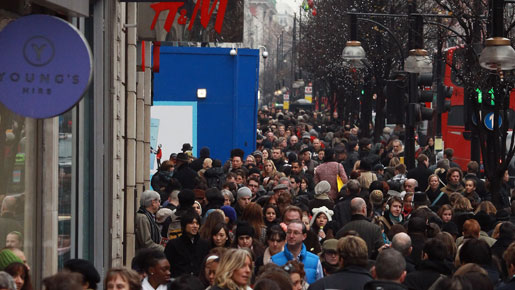
British retail sales volumes fell last month for the first time since January, in a sign that consumer demand may be slipping ahead of planned government spending cuts, official data shows.
The Office for National Statistics said sales volumes fell 0.5 percent last month, and revised July’s sales growth down to 0.8 percent from 1.1 percent.
On the year, retail sales volumes rose just 0.4 percent – only a fifth of the two percent that analysts had forecast. July’s annual growth was also revised lower.
The ONS said that July’s revisions were amplified because of its annual rebasing of the sales index as well as a review of its seasonal adjustment of the data, which came on top of standard revisions as retailers sent in late sales data.
Falls in sales were broad-based, with declines in food, fuel, clothing and household goods.
One bright spot for the Bank of England – which is worried about above-target inflation – was a fall in the retail sales deflator to 1.5 percent, its lowest since November.
The fall follows several months of surprisingly strong growth, though some sentiment surveys have been pointing to a weakening of consumer demand ahead of cuts of around 25 percent to the budgets of most government departments, which are likely to push up public sector unemployment.
Although results of UK retailers have generally started to improve following the recession, many experts think the sector faces a harsh winter as the government cuts spending and raises taxes to rein in a record public deficit.
Bellwether British retailer John Lewis said trading conditions would likely get tougher as tax hikes and public spending cuts hit shoppers, as it reported a 28 percent rise in first-half profit.
Kingfisher, Europe’s biggest home improvement retailer, beat first-half profit forecasts, helped by cost-cutting and business improvements that it said would help it to cope with a tough consumer outlook. But it too saw tougher times ahead.

